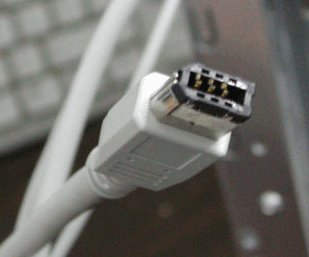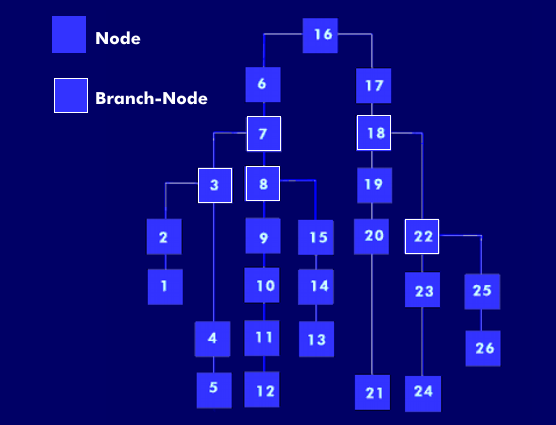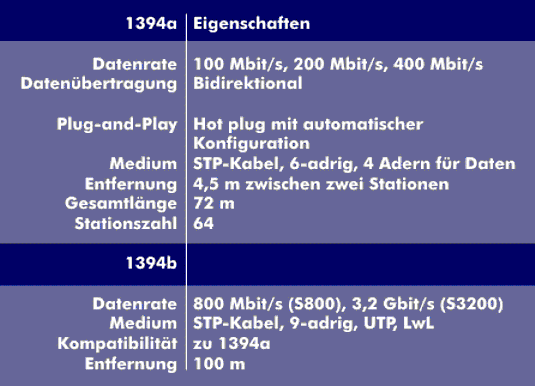IEEE 1394
Under the IEEE standard 1394, a serial high-speed connection technology for peripherals and consumer electronics devices has existed since 1995 with which DVD drives, video and television sets, digital cameras or camcorders can be connected. The 1394 technology was developed by Apple and is known as FireWire. Both terms IEEE 1394 and FireWire are used synonymously.
The IEEE 1394 standard distinguishes between two versions: the a version with transmission speeds of 100 Mbit/s, 200 Mbit/s and 400 Mbit/s, and the faster b version with 800 Mbit/s, 1,600 Mbit/s and 3,200 Mbit/s. These speed classes of 1394a are called S100, S200 and S400, those of 1394b S800, S1600 and S3200.
The different speed classes can be used to bridge different distances. For example, the permissible distance between two devices is 4.5 m for S400, for S200 it increases to 14 m, and the total length is 72 m. 1394a uses a 6- pin STP cable as the transmission medium. A total of up to 64 stations can be connected to a 1394 bus, with each station having two ports: one input and one output. Expansion of the configuration is possible via bridges. Up to 1023 buses can be connected via bridges. In addition to the bus topology, a 1394 network can also be constructed in tree topology. Since some stations, the branch nodes, have several 1394 ports, branching and series connections of peripheral devices are easily possible. The maximum configuration consists of 16 STP cables, so a total of 17 peripheral devices can be connected without loops.
The architecture of IEEE 1394
The 1394 architecture forms a peer-to-peer network over which all devices can communicate with each other. There is no central station; any connected device can perform this function. The 1394 layer model consists of the four layers: Management Layer, Transaction Layer, Link Layer, and Physical Layer.
1394 is designed to be plug-and-play( PnP); configuration is automatic with ID numbers defined so that the user does not have to make any settings or addressing. The total address comprises 64 bits of which 10 bits are used for the network ID, another 6 bits for the node ID and the remaining 48 bits for the device ID.
The1394b version uses 9- wire STP cables and 9-pin connectors, which are also used in the super-fast 1394c version, from 2008, with 3.2 Gbps. In addition to the STP cable, other transmission media can also be used in the b version, including fiber optic cables and UTP cables. Due to the 8B/10B coding used in the b-version, the distance limit could be extended to 100m.
A major advantage of 1394b is its high efficiency. Since the method works without polling and idle times, the overhead for S800 is only 3%. This means that 97% of the transmitted data is payload. The 1394b technology is suitable for device networking with high data rates and for consumer electronics, since it can transmit high-definition television, HDTV, uncompressed over longer distances.
There are many different specifications for the 1394 standard. In addition to IEEE 1394-1995, IEEE 1394a, IEEE 1394b and IEEE 1394c, which are standardized by the IEEE, there are FireWire, Apple's iLink and Texas Instruments' Lynx, which are standard compatible, but in the case of Lynx, use a different connector system. Furthermore, there is a wireless variant of the 1394 Trade Association with Wireless 1394 or Wireless-FireWire, which is also considered in the platform ofWiMedia.



